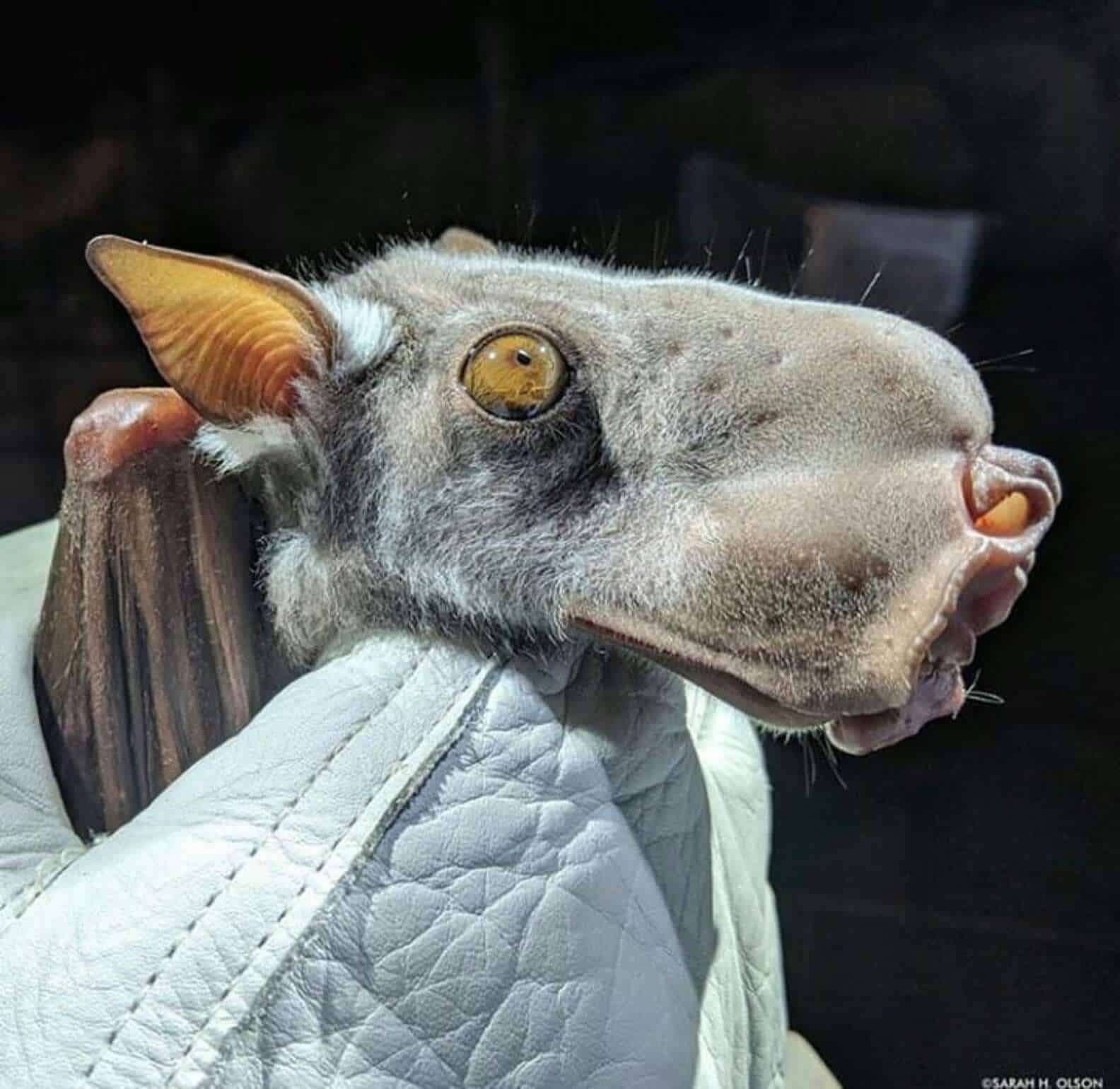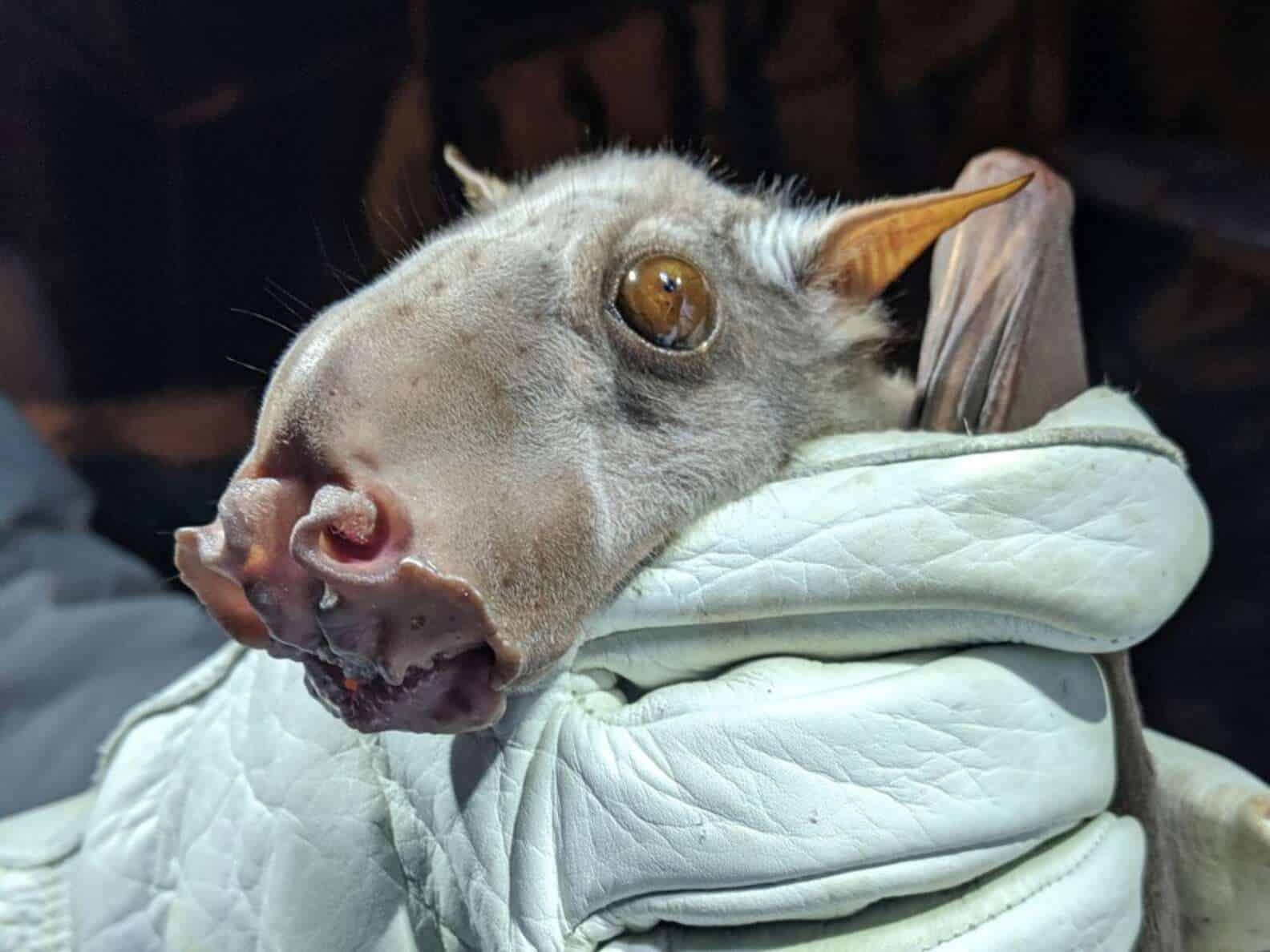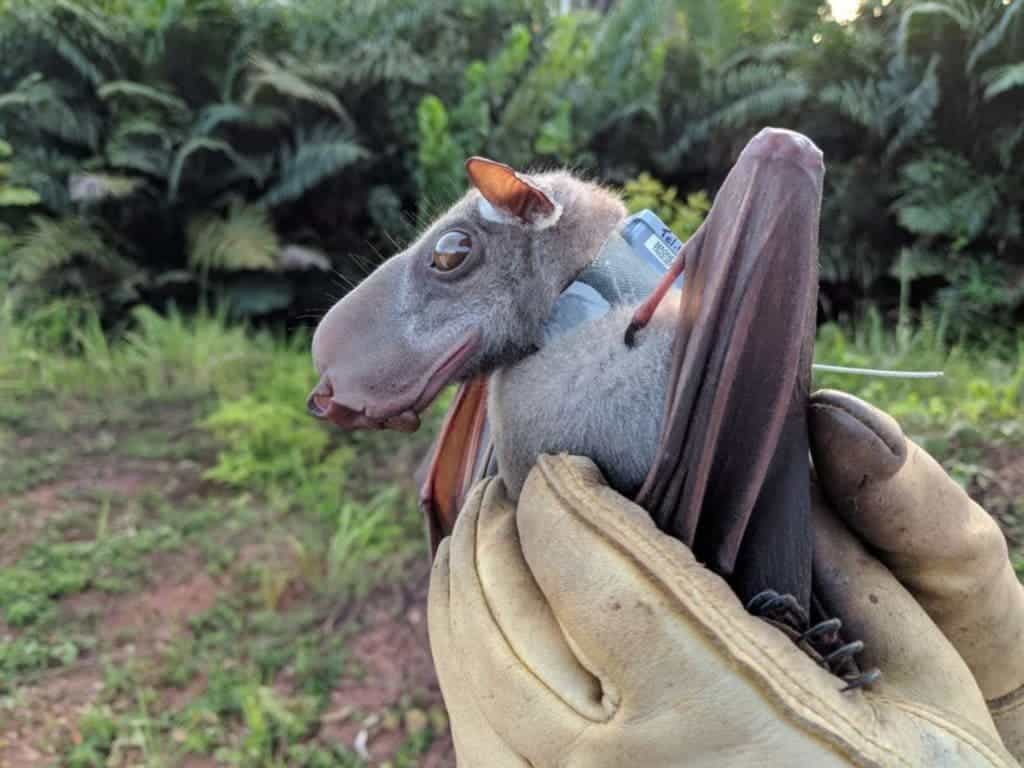Most bat species have little rodent-like faces but the hammer-headed bat (Hypsignathus monstrosus) is in a league of its own. The odd-looking flying mammal has a super elongated face that has many who see pictures of it on social media question its very existence.
Yet despite its larger-than-life appearance, this uniquely faced creature isn’t a product of Photoshop or imaginative folklore – it’s as real as the sky above.

What is the Hammer-headed bat? Introducing Africa’s largest bat
The hammer-headed bat, also known as the hammer-headed fruit bat and big-lipped bat, is a megabat species whose range is distributed across the tropical forests of central Africa, where it reigns as the largest bat on the continent. Nestled within the verdant tropical forests, these bats find solace in lowland moist forests, along riverbanks, and even amid swamps and mangroves, roosting high up in the trees.
While their wings span an impressive 38 inches, their body length is a more humble 10 inches. And it’s the males who steal the show with their exaggerated heads – a feature females of the species lack.
Unlike many other bat species that opt for segregation, hammer-headed bats thrive in mixed groups. From cozy quartets to bustling groups of twenty-five, these bats choose to roost in harmony.
But when it comes to foraging, their strategies diverge. While the females stick to familiar routes with reliable but perhaps lesser-quality food sources, the males embrace the thrill of the unknown. Venturing up to 6 miles in search of the finest food patches, the males take riskier routes searching for better food patches. Upon discovering their favored fruit, they often sample it on the spot before transporting their prize to a secluded location for a peaceful feast.
Come breeding season, the skies resonate with their peculiar calls as males engage in elaborate courtship displays, hoping to entice the discerning females. This dance of attraction, known as lekking, showcases these long-nosed males at their most passionate.
The face of an ‘ugly-cute’ flying mammal

“I’m simply awestruck by hammer-headed fruit bats (Hypsignathus monstrosus). Close-up any given feature, eye, fur, nose, ear, wing, or foot, is extraordinary. In hand, whiskers appear in patterns seemingly unique to each individual, and the nasal and lip folds of the adult males, like the one shown, provide a sculptural finish to the overall moose-head look.”
“As we handle them to collect samples, they show distinct behaviors ranging from docile to teeth masher, hence the thick leather gloves. Functionally, as the largest fruit bats in Africa (males weigh in around one pound), they are flying seed dispersal machines, critical to equatorial forest health,” wrote Sarah Olson, an associate director of wildlife health at the Wildlife Conservation Society (WCS), in a 2018 blog post.

Olson and colleagues have been studying these rather elusive bats for several years to better understand their ecology and behavior. Perhaps this may prove vitally important in the future, considering all the hardship from the pandemic — caused by a virus thought to have initially appeared in bats — is still fresh in everyone’s mind.
The hammer-headed bat is only one of three species of African fruit bats that can become asymptomatically infected with the dreaded Ebola virus, although scientists have yet to establish if the species is an incidental host or a reservoir of the virus.
“Aside from threats to human health, this deadly virus is linked to massive declines in populations of western lowland gorillas in Congo and Gabon. Our job as scientists is to find a way to prevent Ebola outbreaks and help conserve these bats for future generations, one bat at a time,” said Olson.


